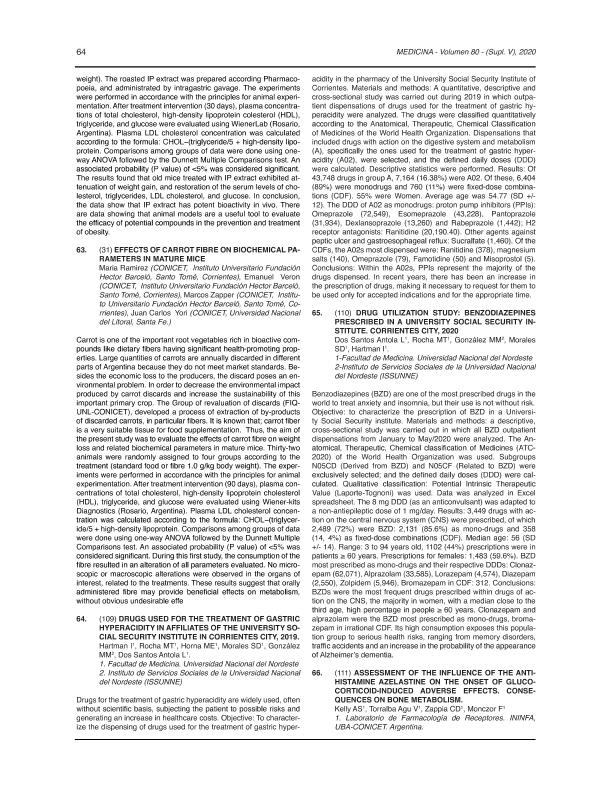Evento
Assessment of the influence of the antihistamine azelastine on the onset of glucocorticoid-induced adverse effects. consequences on bone metabolism
Tipo del evento:
Reunión
Nombre del evento:
LXV Reunión Anual de la Sociedad Argentina de Investigación Clínica, LXVIII Reunión Anual de la Sociedad Argentina de Inmunología y Reunión anual de la Sociedad Argentina de Fisiología
Fecha del evento:
10/11/2020
Institución Organizadora:
Sociedad Argentina de Investigación Clínica;
Sociedad Argentina de Inmunología;
Sociedad Argentina de Fisiología;
Título de la revista:
Medicina (Buenos Aires)
Editorial:
Fundación Revista Medicina
ISSN:
1669-9106
Idioma:
Inglés
Clasificación temática:
Resumen
We have previously described in vitro that histamine H1 receptor ligands potentiate the anti-inflammatory effects of glucocorticoids (GCs) and established its therapeutic potential in a murine asthma model. Though, it is crucial to evaluate how this crosstalk alters the onset of GC-induced adverse effects to assess cotreatment safety. Considering that the therapeutic use of GCs is often limited by bone loss, we used the MC3T3-E1 osteoblastic cells differentiated with ascorbic acid and β-glycerophosphate as an in-vitro model to study the joint effect of dexamethasone (DEX) and the antihistamine azelastine (AZE) on the expression of bone biomarkers OPG, RANKL and OC, determinants of the balance between bone formation and resorption. Treatment of the cells with 0.1 nM DEX reduced osteoprotegerin (OPG) and increased receptor activator of NF-kB ligand (RANKL) expression in a 17% and 100% respectively, while pre-treatment with 10 µM of AZE reversed both effects by increasing OPG and decreasing RANKL expression in a 92% and 66% respectively. Additionally, treatment with 1 nM DEX reduced osteocalcin (OC) gene expression in 48%, while in cells pre-treated with 10 µM AZE this reduction was 16%. These findings suggest that co-treatment might represent an advantage in terms of bone impairment. We also performed the MTS metabolic assay to assess the effect of AZE on cell proliferation. Treatment with DEX inhibited cell proliferation in a concentration-dependent manner, reaching the maximal effect at 1 µM while pretreatment of cells with 1 µM AZE potentiated DEX inhibition evidenced by a reduction of its pEC50 in one order of magnitude (8.28 ± 0.44 to 9.38 ± 0.2). In contrast with our previous results, this suggests that cotreatment might be unsafe in terms of bone impairment. Overall, these discrepancies grant further research to elucidate the composite effect and the molecular mechanisms by which antihistamines modulate the appearance of GC-induced adverse effects.
Palabras clave:
Glucocorticoid
,
Antihistamines
,
Adverse effects
,
Inaflammation
Archivos asociados
Licencia
Identificadores
Colecciones
Eventos(ININFA)
Eventos de INST.DE INVEST.FARMACOLOGICAS (I)
Eventos de INST.DE INVEST.FARMACOLOGICAS (I)
Citación
Assessment of the influence of the antihistamine azelastine on the onset of glucocorticoid-induced adverse effects. consequences on bone metabolism; LXV Reunión Anual de la Sociedad Argentina de Investigación Clínica, LXVIII Reunión Anual de la Sociedad Argentina de Inmunología y Reunión anual de la Sociedad Argentina de Fisiología; Argentina; 2020; 64-65
Compartir




